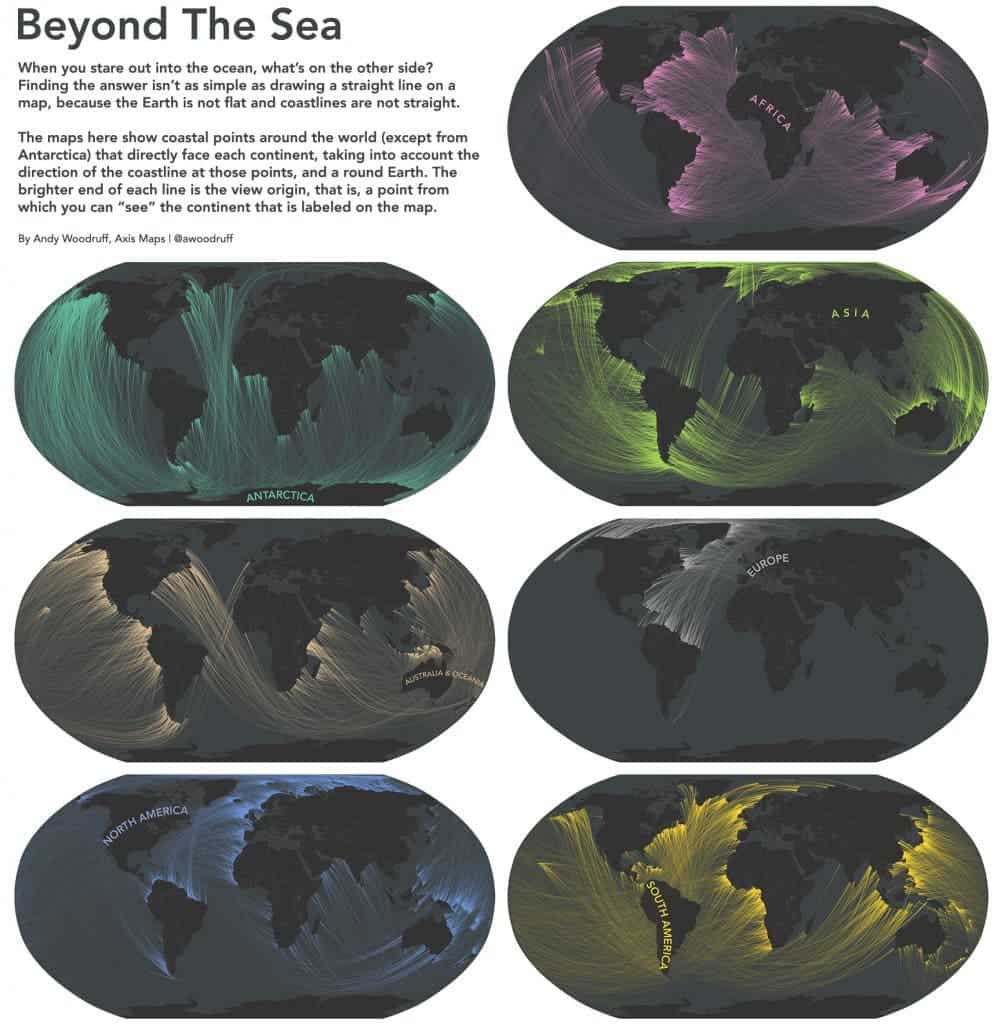You know those maps of the world with horizontal lines across the ocean, “this is what you see when you look across the ocean”? Well yeah, they’re no good. As cartographer Andy Woodruff indicates, they’re way, way off.

When you look at the ocean, what are you seeing on the other side? It would be tempting to draw a straight line and say that’s what you see, but the answer isn’t as simple, for two reasons. First of all, coasts aren’t straight. The East Coast in North America isn’t a straight line from north to south. The coast line is crooked, and you’re dealing with a lot of angles. Woodruff explains:
“Taking “across the ocean” to mean directly across, perpendicular to the coast, then what’s across the ocean depends on where you’re standing! To get a rough idea of what direction the world’s coastlines face, I’m calculating the angle between every pair of adjacent coastal vertices in medium scale Natural Earth data, then placing a point in between them and measuring the view from there based on that angle.”
The second point is trickier to explain and understand, but it boils down to this: you’re drawing straight lines on a round object. The planet is more or less a sphere, and parallels stray away from the straight path. This means that places like Rhode Island and Spain are at the same latitude, although you wouldn’t expect it.
So, depending on where you are on the East Coast, you may be looking at Western Europe, but you’re just as likely looking at Africa or even South America. Moving up a bit to the north, if you’re in Newfoundland, Canada, you probably think you’re looking towards Iceland, but you’re actually looking at a very distant Australia. Europe generally “sees” North or South America depending on where you are, while from Australia you can look across the entire globe, depending on where you are.
You can read more about how these maps were made (very insightful read), but there are two main takeaways here: firstly, whenever you’re looking across the ocean, you’re probably not looking where you think you are. Secondly, our planet is as complicated as it is beautiful – not everything is as simple as drawing a straight line.






